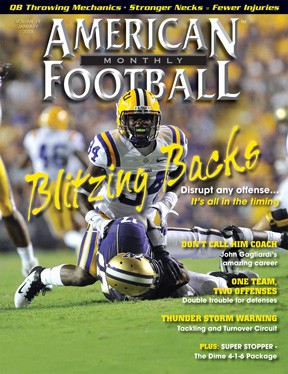Article CategoriesAFM Magazine
|
Speed Report Is Your Off-Season Football Speed Training on Track?by: Dale BaskettFootball Speed Specialist © More from this issue If you have been reading my articles over the last six years, you know that I try to point coaches in the right direction for true football speed development. My hope is that you will apply useful teaching methods that are currently not available. The first step is having an open mind for learning new concepts. Whatever you have chosen to use as a method for speed development requires time to install. Time is the greatest commodity in life. We only have so much time to utilize and we want maximum results for the time we spend on whatever we do. Joe Vitt, the interim head coach with the New Orleans Saints, hired me in 1986 when he was the strength and conditioning coach at that time for the Seattle Seahawks. What Ive learned and formulated over 31 years is a better way to teach football speed to football pla....The full article can only be seen by subscribers.
|
|
|||||||
| HOME |
MAGAZINE |
SUBSCRIBE | ONLINE COLUMNISTS | COACHING VIDEOS |
Copyright 2025, AmericanFootballMonthly.com
All Rights Reserved





